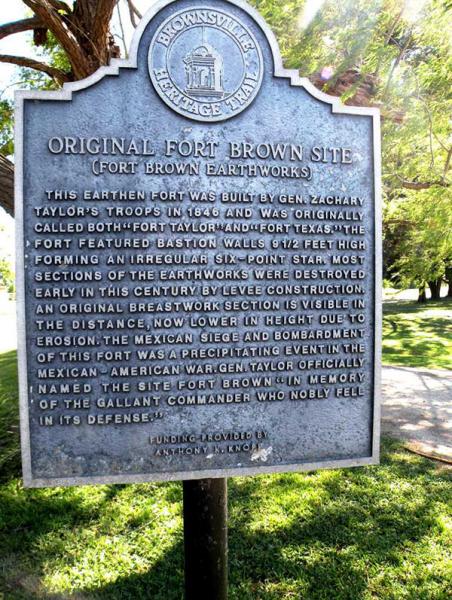Golf and government do not always mix. Just look at Fort Brown Memorial Golf Course in Brownsville, Texas.
 Fort Brown once stood as a shining monument to Texas history. Today, it's a discarded remnant of the past.
Fort Brown once stood as a shining monument to Texas history. Today, it's a discarded remnant of the past.Built on the site of a former historic military installation named for the city's namesake, Maj. Jacob Brown, the golf course operated from the mid-1950s until its closing in 2015.
It wasn't declining interest in the game that doomed Fort Brown as much as it was federal immigration policy that nearly sealed off the course from the rest of the country and left the property's owner, its determined manager and those who played there out in the cold.
Like many cities throughout the state, Brownsville is rich with history dating to the Texas Revolution, the Mexican-American War and the Civil War.
Commissioned in 1846, the military installation at Fort Brown saw action in armed conflicts dating from the Mexican-American War (1846-1848) to the Civil War to World War II. Originally named Fort Texas, it was late renamed to honor its leader who was killed there in 1846.
During the Civil War, the installation was occupied at one time or another by both Confederate and Union forces, and the Army used it for air combat training during World War II.
Shortly after the fort was decommissioned in 1946, a full century after it was established, the city of Brownsville built a golf course on the site. According to historic archives, the course, like so many others, was built to as an alternative to country club golf.
For more than a half-century, the Fort Brown Memorial Golf Course was a place where locals, including much of the area's Hispanic population, could learn the game and enjoy affordable golf. Originally owned by the city, the course was turned over in 1992 to nearby Texas Southernmost College, which, along with local high schools, used the facility as its home course.
Located on the southern tip of one of the many peninsulas formed by the meandering Rio Grande, the course literally was a short-iron from Matamoros, Mexico. Years ago, that city became a haven for Mexican drug cartels and gangs and quickly cemented a place on the U.S. government's short list of Mexico's most dangerous cities.
Despite its location and aging infrastructure, the course remained quite busy after Bob Lucio took over as manager in 1997. With new irrigation in 2004 and Champion Bermudagrass greens, Fort Brown was humming right along to the tune of about 40,000 rounds per year just as the golf industry was about to go off the rails..
Then came 2005 when word of a pending border fence project leaked out. Lucio's family was heavy into local politics, so he had been aware of border fence rumors in the air, but efforts to fight the fence seemed fruitless. Almost immediately, many who played at Fort Brown on a regular basis stopped coming back and Lucio's insurance carrier nearly doubled his rates. It was bad timing for the operator, who just the year before had invested in a new irrigation system.
With the wounds inflicted on 9/11 still fresh in the United States, the Department of Homeland Security made good on a pledge to try to curtail drug and crime activity in Matamoros from crossing the border and in 2008-2009 constructed the fence years before political rhetoric of a wall dominated the news and election cycles. Rather than follow the course of the river throughout the entirety of its run between the Brownsville and Matamoros, the fence cuts along in a series of straight lines in some of those peninsular areas, virtually isolating sects of American territory between Mexico and the manmade barrier and alienating people on both sides of the Rio Grande. Located in that no-man's land, seemingly cut off from the rest of Brownsville and the state of Texas was the golf course.
There was still limited access to the course after the fence went up, but getting there became a lot harder and being there became a lot less safe. Predictably, play slowed to a trickle right away. Revenue, according to past reports, dropped by nearly half that first year, but Lucio was determined to try to make a go of it. Eventually, the prep and college teams that called Fort Brown home were forbidden to play or even practice there out of concerns for player safety.
A sign on the 16th hole warned golfers that hitting a ball into Mexico - which was very doable from many areas on the course, even for hackers - would mean prosecution. It was intended as a lighthearted reminder of the proximity to one of Mexico's worst neighborhoods.
The writing was on the wall for golfers at Fort Brown and its manager, who slogged on until 2015, when the course finally closed.
Two years later, reminders of the course still are visible, and a video by USA Today indicates fixtures still remain inside the abandoned clubhouse.
Fort Brown Memorial's past as a purveyor of affordable golf for the masses is a reminder of what is good about golf. Overgrown and abandoned, and its stakeholders forgotten, it also is a reminder that golf and government don't always mix.

